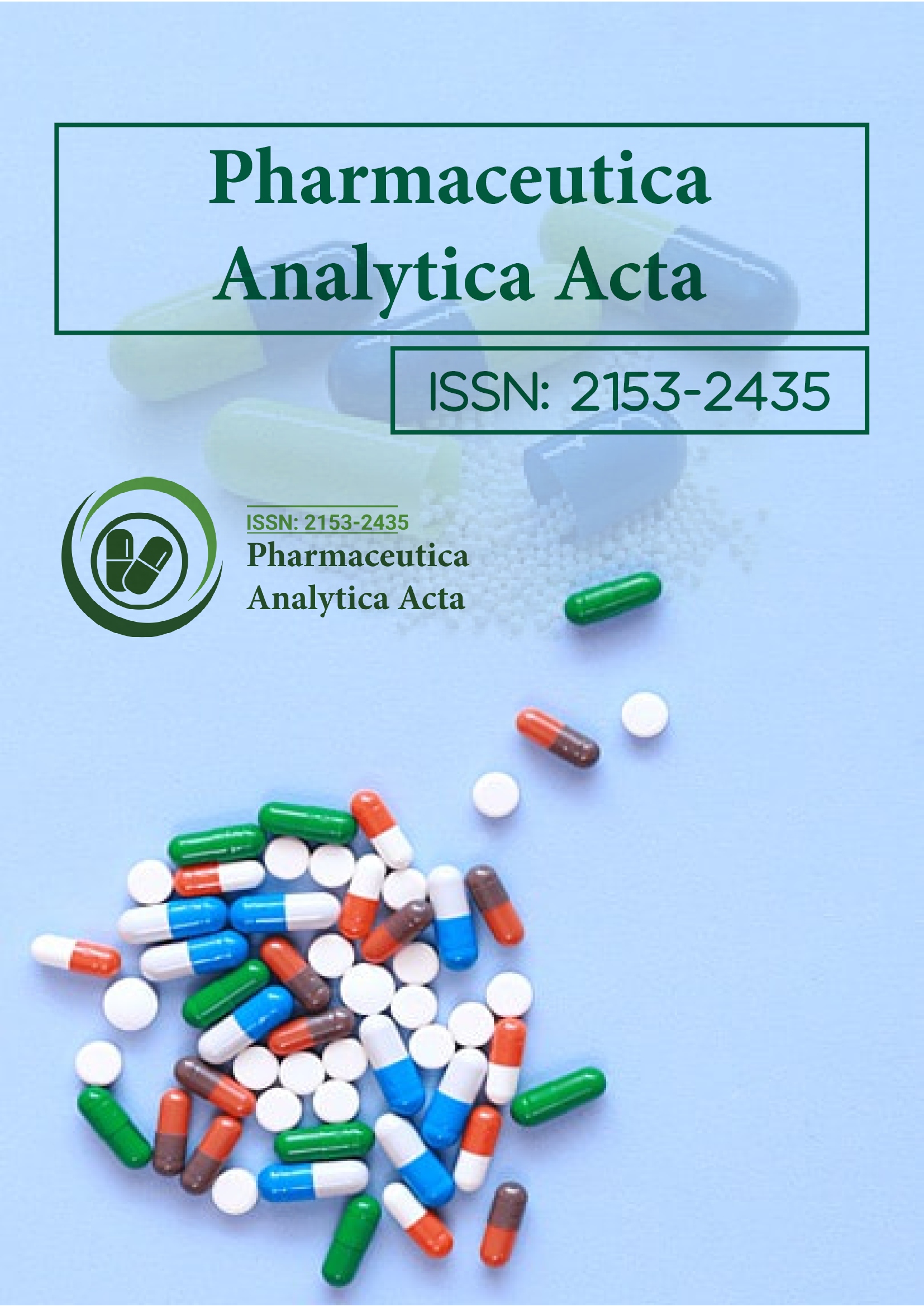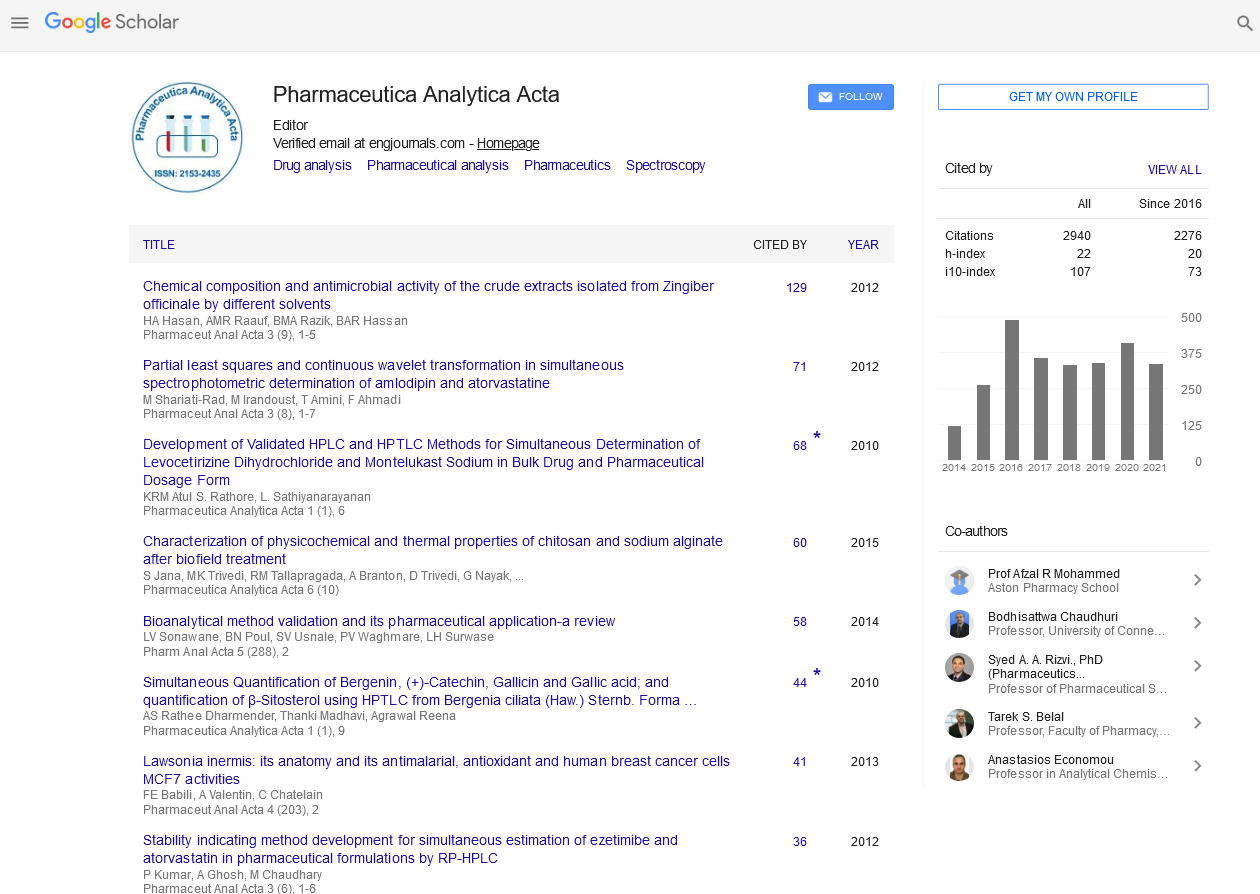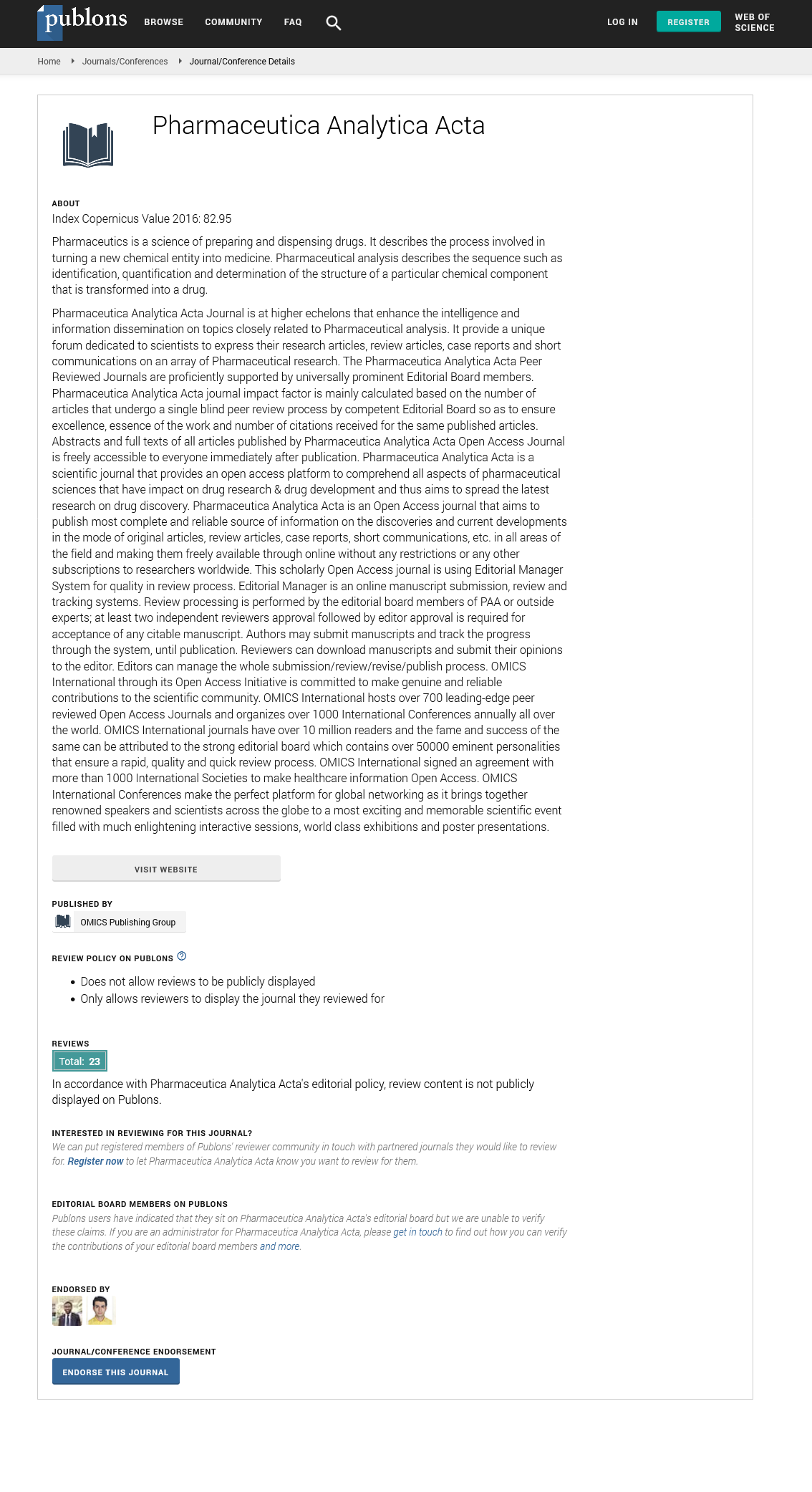Indexed In
- Open J Gate
- Genamics JournalSeek
- Academic Keys
- JournalTOCs
- The Global Impact Factor (GIF)
- China National Knowledge Infrastructure (CNKI)
- Ulrich's Periodicals Directory
- RefSeek
- Hamdard University
- EBSCO A-Z
- OCLC- WorldCat
- Publons
- Geneva Foundation for Medical Education and Research
- Euro Pub
- Google Scholar
Useful Links
Share This Page
Journal Flyer

Open Access Journals
- Agri and Aquaculture
- Biochemistry
- Bioinformatics & Systems Biology
- Business & Management
- Chemistry
- Clinical Sciences
- Engineering
- Food & Nutrition
- General Science
- Genetics & Molecular Biology
- Immunology & Microbiology
- Medical Sciences
- Neuroscience & Psychology
- Nursing & Health Care
- Pharmaceutical Sciences
Opinion Article - (2025) Volume 16, Issue 3
Evaluating Pharmaceutical Stability Through Analytical Observation
Ahmed Karim*Received: 30-Aug-2025, Manuscript No. PAA-25-30228; Editor assigned: 01-Sep-2025, Pre QC No. PAA-25-30228; Reviewed: 16-Sep-2025, QC No. PAA-25-30228; Revised: 22-Sep-2025, Manuscript No. PAA-25-30228; Published: 30-Sep-2025, DOI: 10.35248/2153-2435.25.16.826
Description
Stability evaluation forms an essential foundation in the study of drug quality, ensuring that every product remains safe, effective and reliable throughout its intended lifespan. Understanding how active ingredients and complete formulations respond to environmental stress and extended storage is indispensable for preserving therapeutic value. The investigation of stability offers insight into the chemical and physical transformations that occur over time, providing crucial information for formulating strategies that maintain consistency and performance. Stability data influence a range of important decisions, including the selection of supportive materials, design of packaging, determination of suitable storage conditions and establishment of shelf life. Through comprehensive testing and interpretation, scientists can ensure that medicines retain their intended properties from the moment of production until use by patients. A primary focus of stability evaluation involves close observation of degradation behavior under controlled environments. Compounds are intentionally exposed to elevated temperatures, fluctuations in humidity and varying degrees of light to replicate real-world storage and transportation scenarios. These stress conditions allow experts to identify vulnerabilities and predict how materials will behave over time. Chromatographic and spectroscopic techniques are frequently employed to monitor chemical changes and track the formation of degradation products. High-performance liquid chromatography, for example, enables precise quantification of decomposition levels and detection of trace by-products, while ultraviolet spectroscopy helps reveal structural alterations through shifts in absorbance patterns. In addition, thermal analysis techniques such as differential scanning calorimetry are used to study melting points, crystallinity and interactions between formulation components. By integrating these diverse analytical tools, researchers develop a comprehensive understanding of how stability influences the quality and performance of medicinal products.
However, the purpose of stability assessment extends far beyond identifying degradation compounds. It is equally important to understand the kinetics of these processes in order to predict the rate at which a substance may lose potency under specific environmental conditions. Kinetic evaluation allows calculation of reaction orders, rate constants and activation energies, which together form the basis for accurate shelf-life prediction models. Experts often propose potential mechanisms for degradation, including oxidation, hydrolysis, photolysis or isomerization, to explain observed patterns of change. These insights guide the rational design of formulations and aid in the selection of stabilizing agents that minimize decomposition. Comparing different formulation strategies also plays a significant role. By analyzing variations in excipient combinations, manufacturing methods and dosage forms, scientists determine which approaches provide the greatest protection against external stress. For instance, antioxidants or chelating agents may prevent oxidative decay, while buffer systems help maintain an optimal pH to reduce hydrolytic reactions. Techniques such as cocrystallization, solid dispersion or encapsulation are also used to strengthen the resilience of sensitive molecules. Collectively, such approaches demonstrate how thoughtful design choices directly enhance long-term product durability. The regulatory importance of stability evaluation cannot be overstated. Health authorities around the world require solid evidence that drug products remain effective, safe and chemically consistent throughout their declared shelf life. Stability testing therefore plays a vital role in product registration and compliance processes. Laboratories conducting these studies must adhere to strict procedural guidelines, meticulously recording experimental conditions, test parameters and findings. This level of documentation enables regulatory bodies to assess data integrity and supports decisions regarding approval and continued market distribution. Beyond chemical degradation, physical stability also demands careful consideration. Changes in crystalline structure, particle size or moisture content can alter solubility, bioavailability and overall therapeutic performance. Techniques such as X-ray diffraction, microscopy and thermal analysis help identify these transformations, allowing comprehensive evaluation of formulation integrity. Addressing both chemical and physical aspects of stability ensures that the finished product maintains its intended effectiveness and safety under diverse environmental circumstances.
External factors significantly influence the pace and nature of drug deterioration. Temperature fluctuations accelerate chemical reactions of humidity can trigger hydrolysis or microbial growth and exposure to ultraviolet light often initiates photochemical changes that weaken structural stability. Variations in moisture can also alter solid-state characteristics, affecting the rate of dissolution or physical hardness. Stability testing carefully regulates these variables to produce measurable data that accurately depict a compound behavior under each stress condition. The results provide valuable guidance for the selection of suitable packaging and storage systems. For example, light-sensitive materials may require amber or opaque containers, while moisture-sensitive products might be stored with desiccants or under controlled humidity. Such informed choices help ensure that degradation is minimized throughout the distribution chain. Recent technological progress has transformed the precision and depth of stability evaluation. Advanced chromatographic instruments, equipped with highly sensitive detectors, allow for the identification of even trace levels of degradation by-products that may impact product safety. Modern spectroscopic and thermal methods enable early detection of subtle chemical shifts long before they affect clinical efficacy.
Citation: Karim A (2025). Evaluating Pharmaceutical Stability Through Analytical Observation. Pharm Anal Acta. 16:826
Copyright: © 2025 Karim A. This is an open-access article distributed under the terms of the Creative Commons Attribution License, which permits unrestricted use, distribution and reproduction in any medium, provided the original author and source are credited


